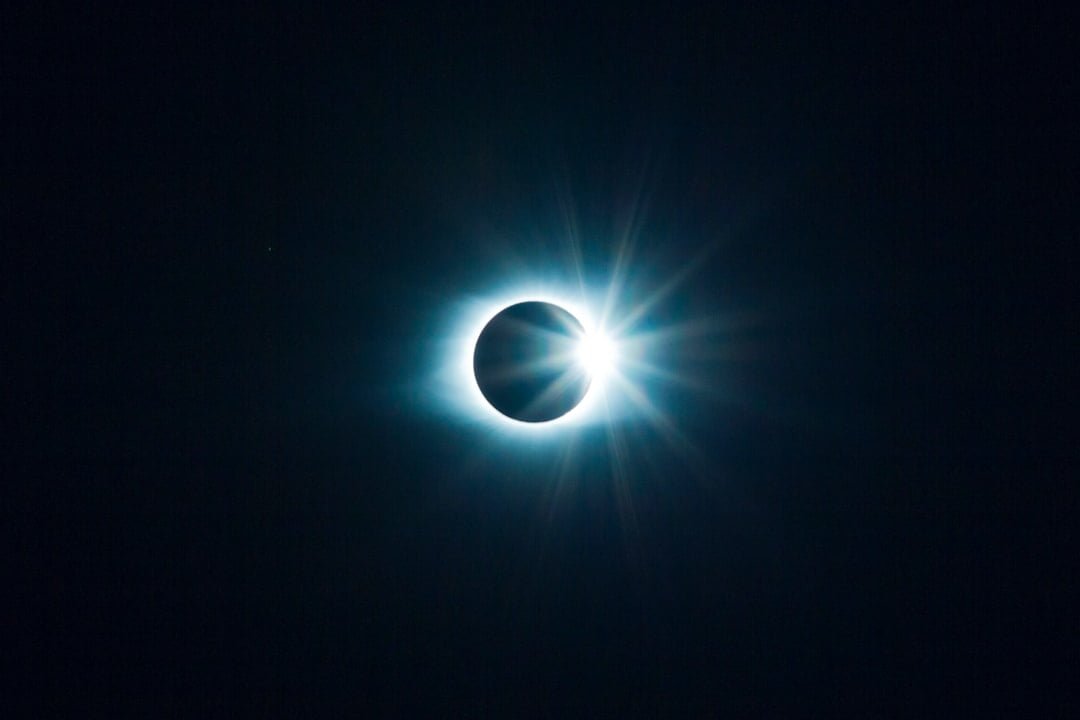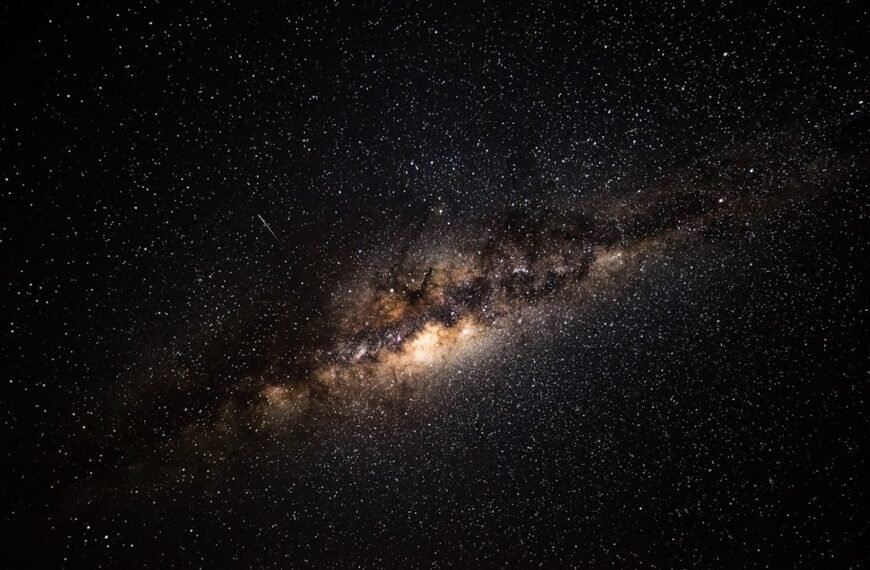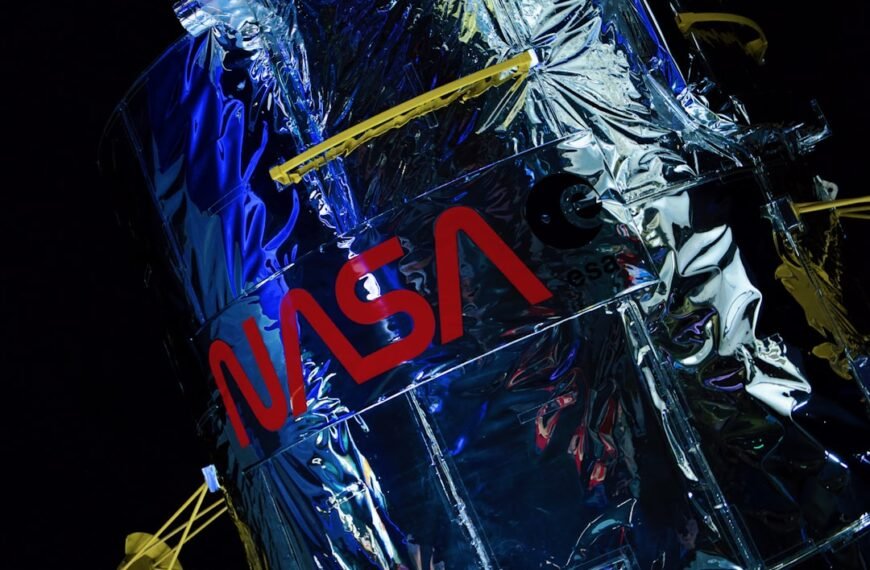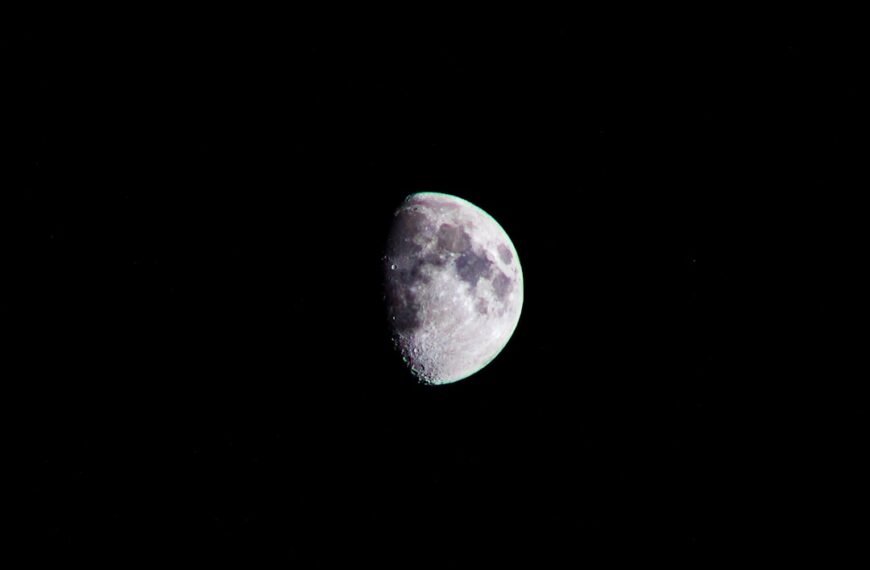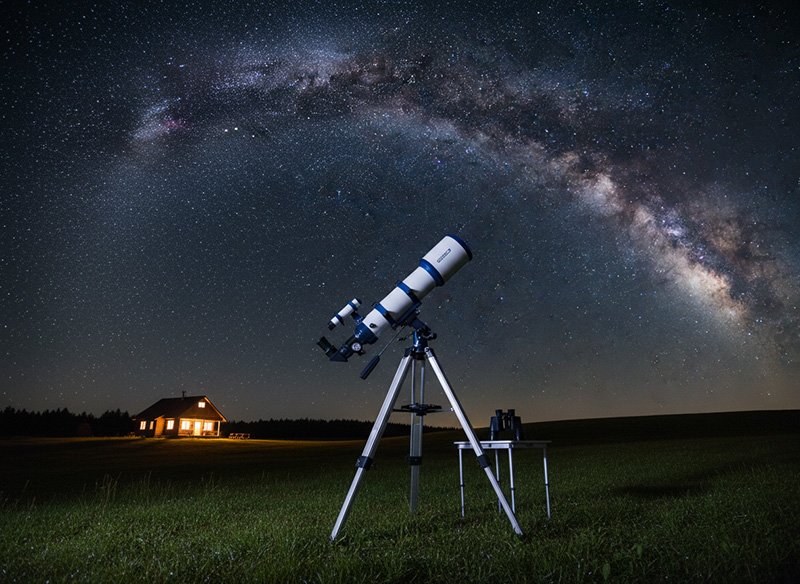Rogue planets, also known as free-floating planets or orphan planets, are a fascinating and mysterious phenomenon in the realm of astronomy. Unlike regular planets that orbit around a star, rogue planets wander through space without any parent star to call their own. These solitary wanderers are believed to have been ejected from their original star systems or formed directly from the collapse of interstellar gas and dust. The discovery of rogue planets has opened up new avenues of research and has challenged our understanding of planetary formation and dynamics.
The existence of rogue planets was first proposed in the early 1990s by astronomers David J. Stevenson and Louis E. Tomanek. They suggested that some planets could be ejected from their star systems due to gravitational interactions with other celestial bodies. This idea was met with skepticism at first, but subsequent observations and studies have confirmed the existence of these nomadic worlds.
Key Takeaways
- Rogue planets are planets that do not orbit a star and instead drift through space alone.
- Rogue planets can form through various processes, such as being ejected from a planetary system or forming directly from a collapsing gas cloud.
- Rogue planets differ from regular planets in their lack of a host star and the extreme conditions they face, such as extreme cold and darkness.
- Scientists search for rogue planets through various methods, including gravitational microlensing and direct imaging.
- The movement of rogue planets is primarily influenced by gravity, both from other planets and from the galaxy itself.
How Do Rogue Planets Form Without a Star?

The traditional planet formation process involves the accumulation of gas and dust around a young star, eventually leading to the formation of a protoplanetary disk. Within this disk, small particles collide and stick together, gradually growing in size to form planetesimals. These planetesimals then collide and merge to form protoplanets, which eventually become fully-fledged planets.
However, rogue planets do not follow this conventional path. One theory suggests that they are formed through a process called gravitational instability. In this scenario, a dense region within a protoplanetary disk collapses under its own gravity, forming a clump of gas and dust that eventually becomes a rogue planet.
Another possibility is that rogue planets are formed through ejection from their original star systems. This can occur when two or more planets undergo close encounters, resulting in gravitational interactions that fling one or more planets out into interstellar space.
What Makes Rogue Planets Different from Regular Planets?
Rogue planets exhibit several distinct characteristics that set them apart from regular planets. Firstly, their lack of a parent star means that they do not receive any significant amount of light or heat. As a result, rogue planets are typically much colder than their star-bound counterparts. Their temperatures can range from a few degrees above absolute zero to a few hundred degrees Celsius, depending on factors such as their distance from other stars and the presence of internal heat sources.
In terms of physical characteristics, rogue planets can vary widely in size and mass. They can be as small as Earth or as massive as Jupiter, and everything in between. Some rogue planets may even be larger than their parent stars. Additionally, their atmospheres can differ significantly from those of regular planets. Without the presence of a star to provide energy for atmospheric processes, the atmospheres of rogue planets may be composed primarily of gases such as hydrogen and helium, with little to no oxygen or carbon dioxide.
The Search for Rogue Planets: How Do We Find Them?
Detecting rogue planets is a challenging task due to their lack of a parent star and the vast distances they can be from us. However, astronomers have developed several methods to identify these elusive objects.
One method is known as gravitational microlensing. This technique relies on the gravitational bending of light by massive objects, such as rogue planets, which can act as lenses. When a rogue planet passes in front of a background star, its gravity causes the star’s light to bend and magnify, creating a temporary increase in brightness that can be detected by telescopes on Earth.
Another method is direct imaging, which involves taking pictures of the sky and searching for faint objects that are not associated with any nearby stars. This approach requires advanced telescopes equipped with adaptive optics systems to correct for atmospheric distortions.
Additionally, astronomers can also search for the effects of rogue planets on other celestial bodies within their vicinity. For example, the gravitational pull of a rogue planet can cause a nearby star to wobble or exhibit irregularities in its motion. By carefully studying these deviations, scientists can infer the presence of a rogue planet.
The Mystery of Rogue Planet Migration: How Do They Travel Without a Star?
One of the most intriguing aspects of rogue planets is how they manage to travel through space without the gravitational influence of a star. While the exact mechanisms are still not fully understood, scientists have proposed several theories to explain this phenomenon.
One possibility is that rogue planets are formed close to their parent stars and are subsequently ejected due to gravitational interactions with other planets or passing stars. These interactions can give the rogue planet enough energy to escape its original star system and embark on a journey through interstellar space.
Another theory suggests that rogue planets can form directly from the collapse of interstellar gas and dust, without the need for a parent star. In this scenario, the collapse occurs in regions of low density where the gravitational pull of nearby stars is not strong enough to prevent the formation of a planet.
The Role of Gravity in Rogue Planet Movement
Gravity plays a crucial role in the movement and behavior of rogue planets. Despite not having a star to orbit around, rogue planets are still subject to the gravitational pull of other celestial bodies, such as nearby stars or even black holes.
The gravitational interactions between rogue planets and other objects can cause them to change their trajectory or speed. For example, if a rogue planet passes close to a star, it may be captured into orbit around that star, becoming a companion to it. On the other hand, if a rogue planet encounters a black hole, it may be flung out into deep space at high speeds.
Additionally, the gravity of nearby stars can also affect the atmosphere of a rogue planet. As the planet moves through space, its atmosphere can be heated or cooled by the gravitational interactions with passing stars, leading to changes in its temperature and composition.
Rogue Planets and Interstellar Travel: Could They Be the Key to Space Exploration?
The existence of rogue planets has sparked speculation about their potential use for interstellar travel. Since these planets do not rely on a star for energy, they could potentially serve as long-duration spacecraft capable of carrying humans or robotic missions to distant star systems.
One advantage of using rogue planets for space travel is their abundance. It is estimated that there may be billions of rogue planets in our galaxy alone, making them a readily available resource for future exploration missions. Additionally, their lack of a parent star means that they are not constrained by the limited lifespan of stars, allowing for potentially longer missions.
However, there are significant challenges and limitations to using rogue planets for interstellar travel. Firstly, the lack of a star means that these planets do not have a reliable source of energy. This would require alternative methods of propulsion and power generation, which are currently beyond our technological capabilities.
Furthermore, the extreme cold temperatures and lack of sunlight on rogue planets pose additional challenges for sustaining life and conducting scientific experiments. The development of advanced technologies and systems would be necessary to overcome these obstacles.
The Potential for Life on Rogue Planets: Could They Harbor Extraterrestrial Life?

The possibility of life existing on rogue planets is an intriguing question that has captivated the imaginations of scientists and science fiction enthusiasts alike. While the conditions on most rogue planets may be inhospitable to life as we know it, there is still a chance that some of these wandering worlds could harbor extraterrestrial life.
Some rogue planets may have internal heat sources, such as radioactive decay or residual heat from their formation, which could provide enough warmth to sustain liquid water and potentially support life. Additionally, if a rogue planet were to pass close to a star or another celestial body, it could temporarily receive enough heat and light to create a habitable environment.
The search for signs of life on rogue planets is a challenging task, as it requires the development of advanced telescopes and instruments capable of detecting the presence of atmospheric gases associated with biological activity. However, future missions and technological advancements may bring us closer to answering the age-old question of whether we are alone in the universe.
The Future of Rogue Planet Research: What Discoveries Await Us?
Rogue planet research is still in its early stages, and there is much more to learn about these enigmatic objects. Current and upcoming research projects aim to shed light on various aspects of rogue planets, including their formation, composition, and potential for hosting life.
One such project is the Nancy Grace Roman Space Telescope, set to launch in the mid-2020s. This telescope will be equipped with a coronagraph, a device that blocks out the light from a star, allowing for the direct imaging of nearby planets, including rogue planets.
Additionally, ground-based observatories such as the European Southern Observatory’s Extremely Large Telescope (ELT) and the Giant Magellan Telescope (GMT) will also contribute to rogue planet research by providing high-resolution imaging capabilities.
Future breakthroughs in understanding rogue planets may come from advancements in technology and data analysis techniques. The development of more sensitive instruments and improved computational models will allow scientists to study these objects in greater detail and unravel the mysteries of their formation and evolution.
Rogue Planets and the Fate of the Universe: What Does Their Existence Tell Us About the Cosmos?
The existence of rogue planets has profound implications for our understanding of the universe. Their discovery challenges our traditional notions of planetary formation and dynamics, forcing us to reconsider the processes that shape our cosmic neighborhood.
Rogue planets also provide valuable insights into the distribution and abundance of planets in our galaxy. By studying these objects, astronomers can gain a better understanding of how common or rare planets are, and how they interact with their surroundings.
Furthermore, the presence of rogue planets suggests that there may be a vast population of unbound objects drifting through interstellar space. These objects could potentially play a significant role in the dynamics and evolution of galaxies, as their gravitational interactions can influence the movement and distribution of stars and other celestial bodies.
In conclusion, rogue planets are fascinating celestial objects that have captured the attention of astronomers and astrophysicists around the world. Their unique characteristics and mysterious origins make them a subject of ongoing research and exploration. As our understanding of these wandering worlds continues to evolve, we may uncover new insights into the formation and evolution of planets, the potential for extraterrestrial life, and the nature of our universe.
If you’re fascinated by rogue planets and their mysterious journeys through the cosmos, you’ll definitely want to check out “The Universe Episodes.” This website is a treasure trove of information about our vast universe, offering articles that delve into various astronomical phenomena. One article that caught my attention is “The Loners of Space: Rogue Planets Explained.” It provides a comprehensive explanation of what rogue planets are and how they manage to travel without being tethered to a star. If you’re eager to learn more about these enigmatic wanderers, click here to explore “The Universe Episodes” and satisfy your curiosity.
FAQs
What are rogue planets?
Rogue planets, also known as free-floating planets, are planets that do not orbit around a star and instead drift through space on their own.
How do rogue planets form?
Rogue planets can form in a few different ways, such as being ejected from a planetary system due to gravitational interactions with other planets or passing stars, or forming directly from a collapsing gas cloud without ever being part of a star system.
How do rogue planets travel without a star?
Rogue planets can travel through space without a star by either being ejected from a planetary system or forming directly from a collapsing gas cloud. They continue to move through space due to their initial momentum and the gravitational pull of other objects they encounter.
Can rogue planets support life?
It is currently unknown if rogue planets can support life as they do not receive energy from a star and are typically very cold. However, some scientists have proposed the possibility of life existing on rogue planets that have internal heat sources, such as radioactive decay.
Have rogue planets been discovered?
Yes, rogue planets have been discovered through various methods such as gravitational microlensing and direct imaging. However, they are difficult to detect due to their lack of a star and are likely much more common than currently known.
My Take on Rogue Planets
I find rogue planets to be a captivating and mysterious subject within astronomy. Their existence challenges our traditional understanding of planetary formation and dynamics, sparking new avenues of research and exploration.
Benefits of Reading This Article
Reading this article provides valuable insights into the unique characteristics of rogue planets, their formation processes, and the methods used to detect them. It also offers a glimpse into the potential implications of these wandering worlds for space exploration and the search for extraterrestrial life.
Main Message of This Article
The main message of this article is to highlight the enigmatic nature of rogue planets, emphasizing their distinct features, formation mechanisms, methods of detection, and the role they play in shaping our understanding of the universe. It aims to pique curiosity about these nomadic celestial objects and inspire further exploration and research in the field of astronomy.



